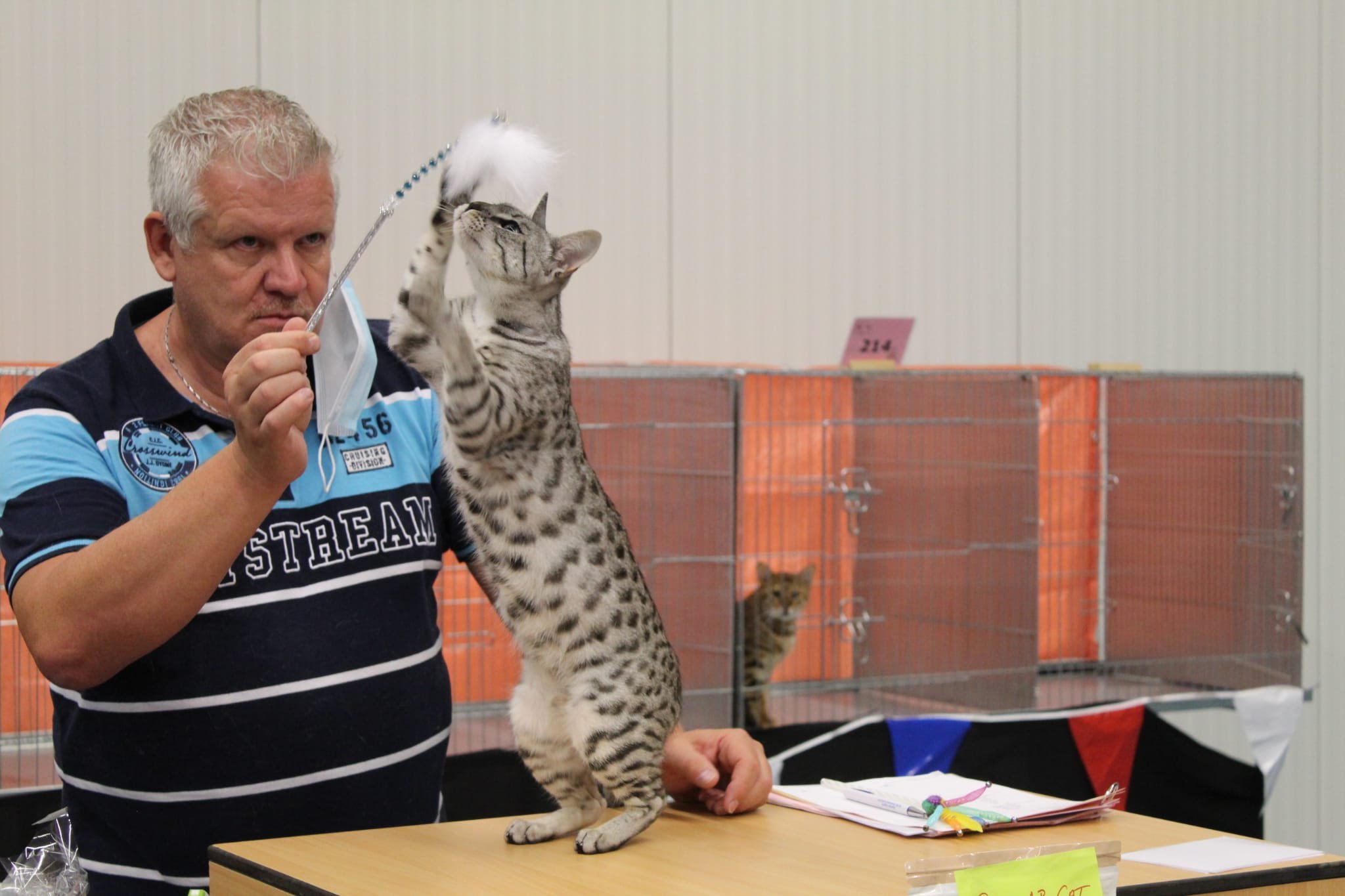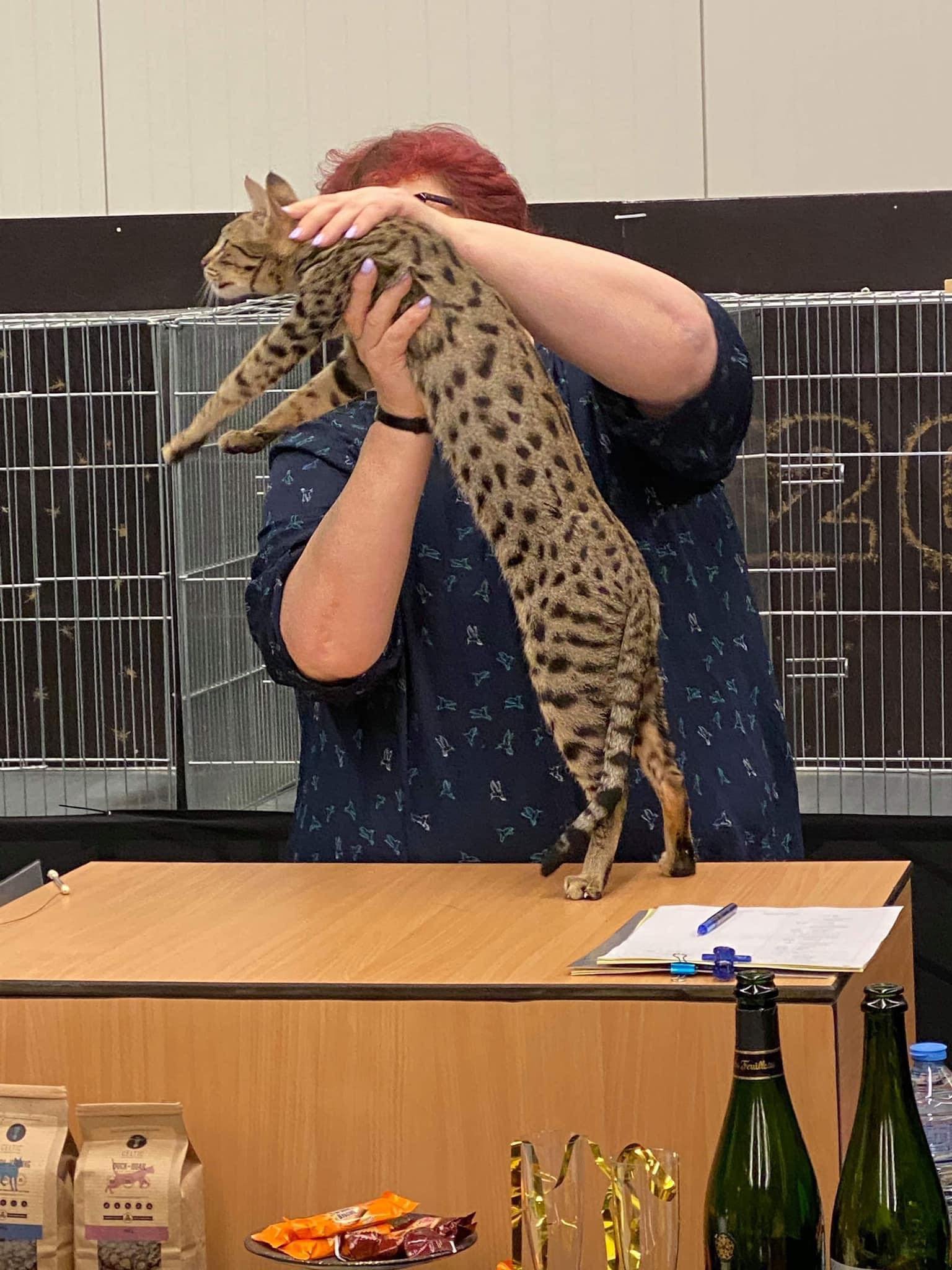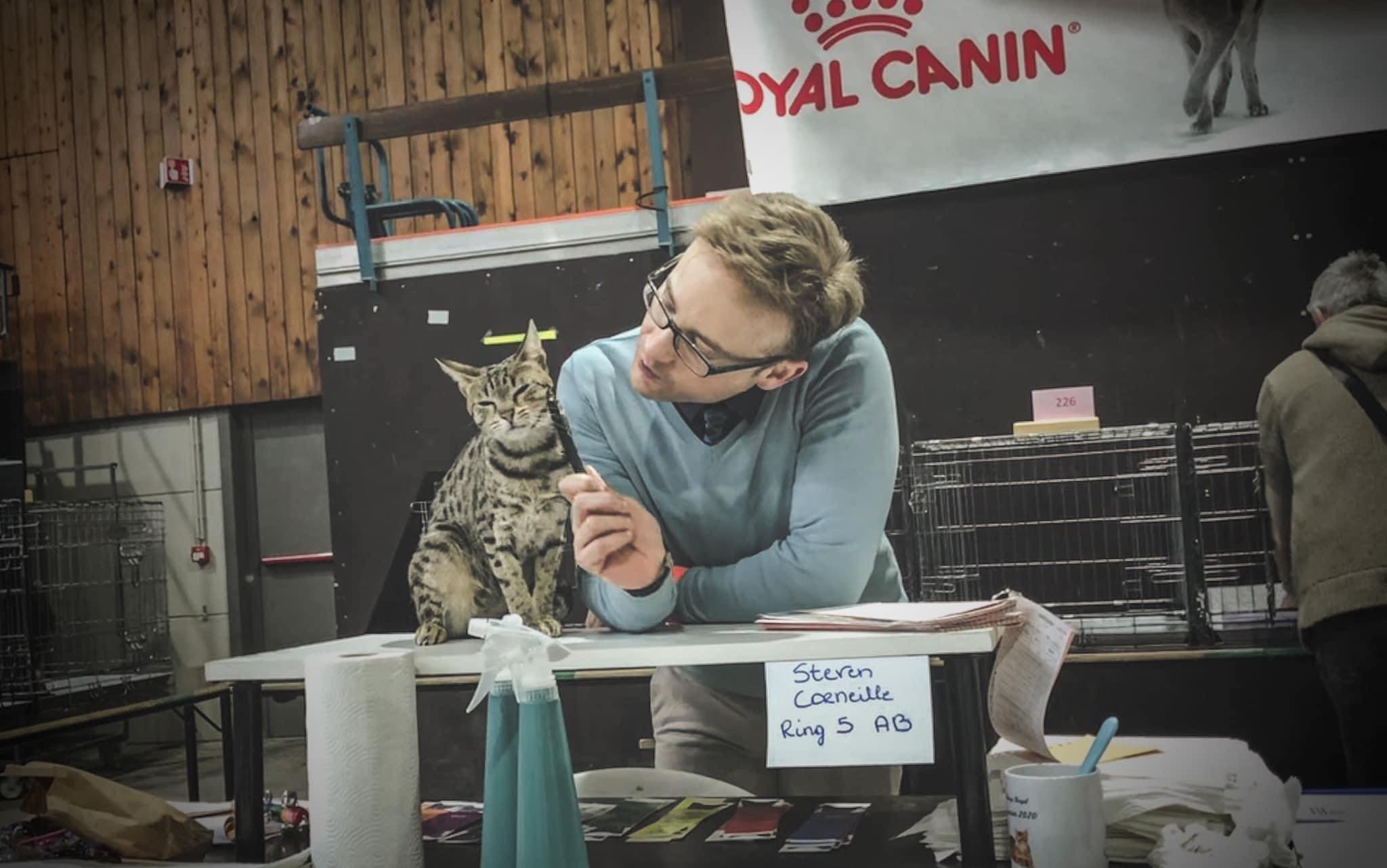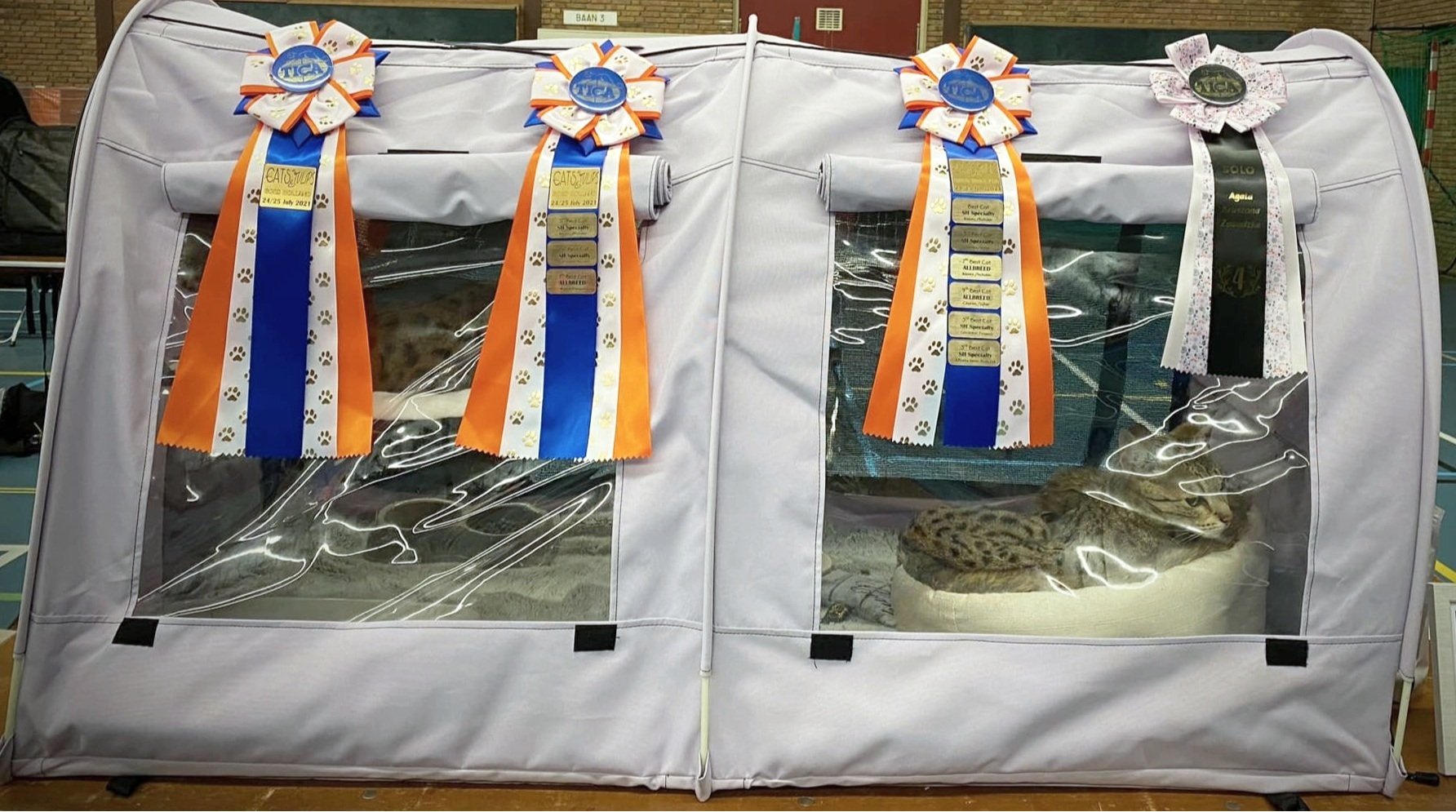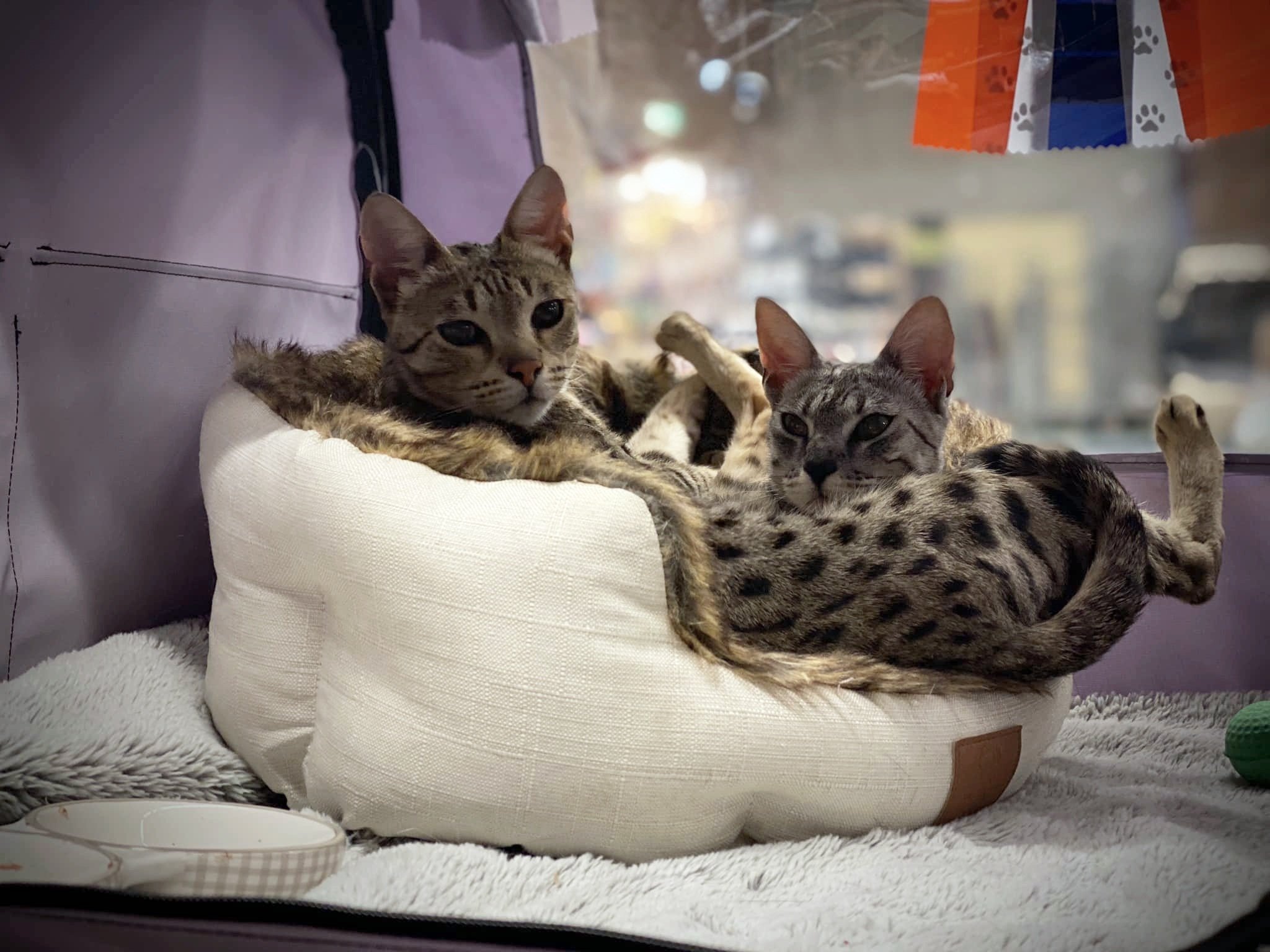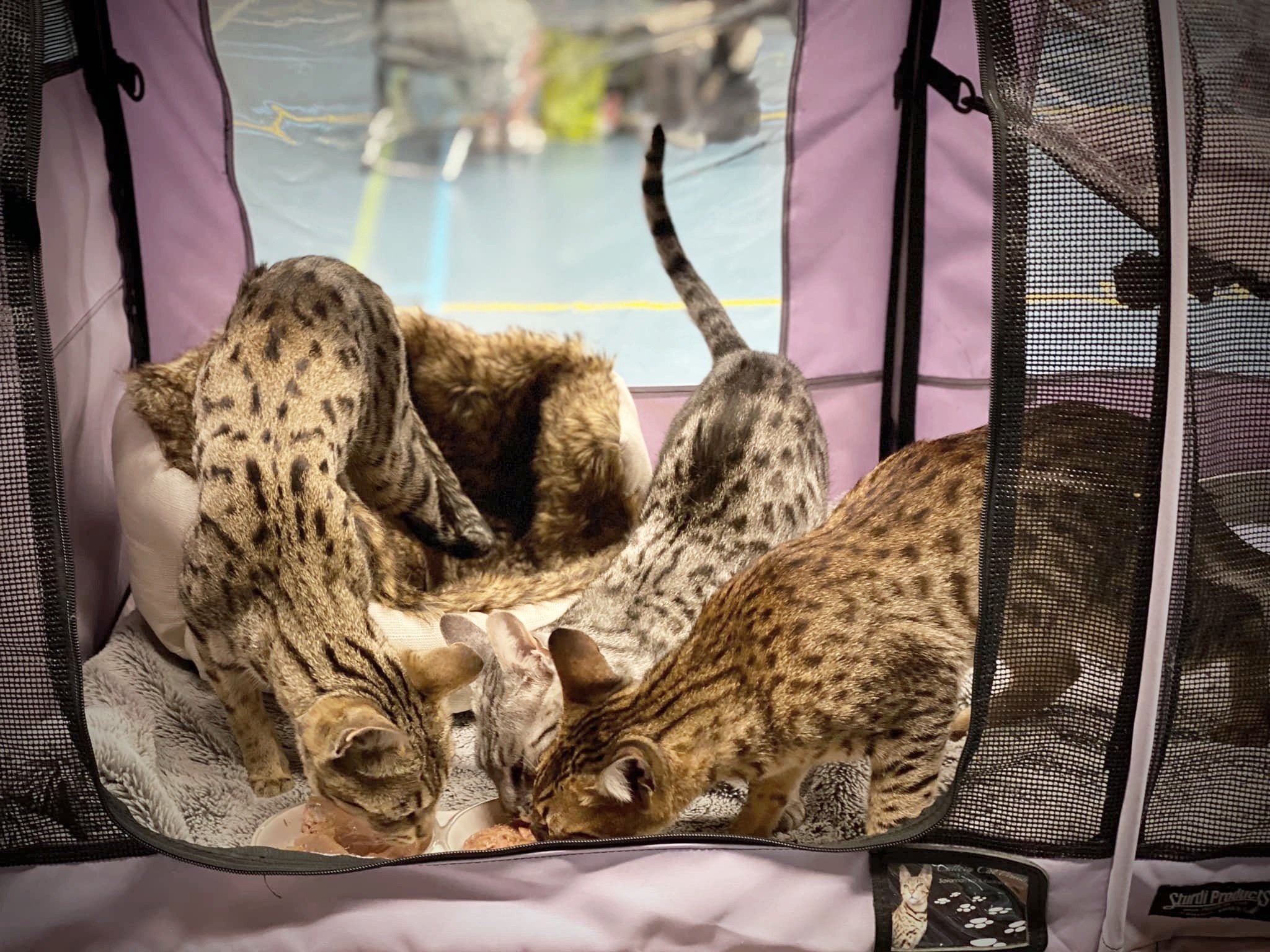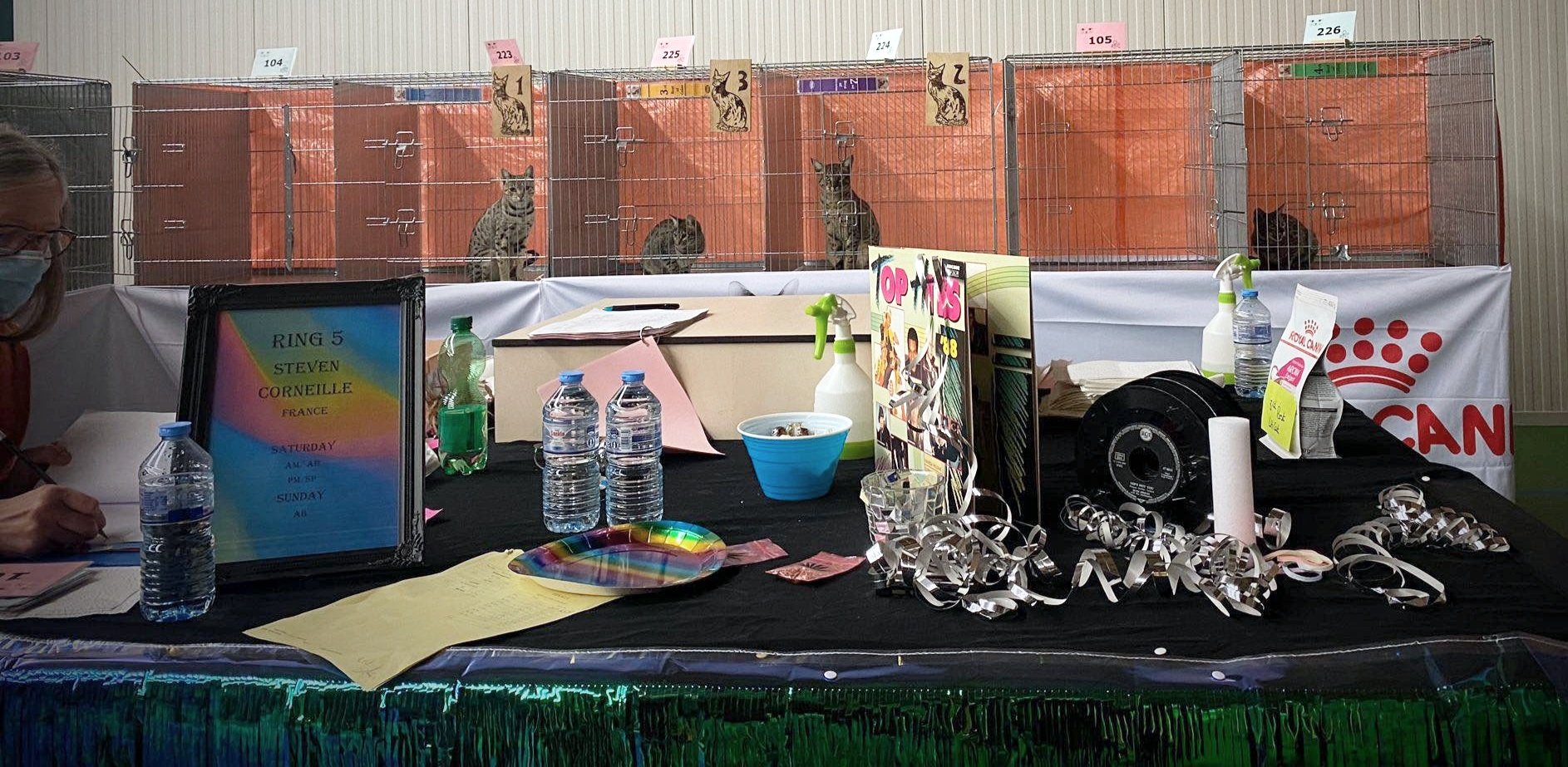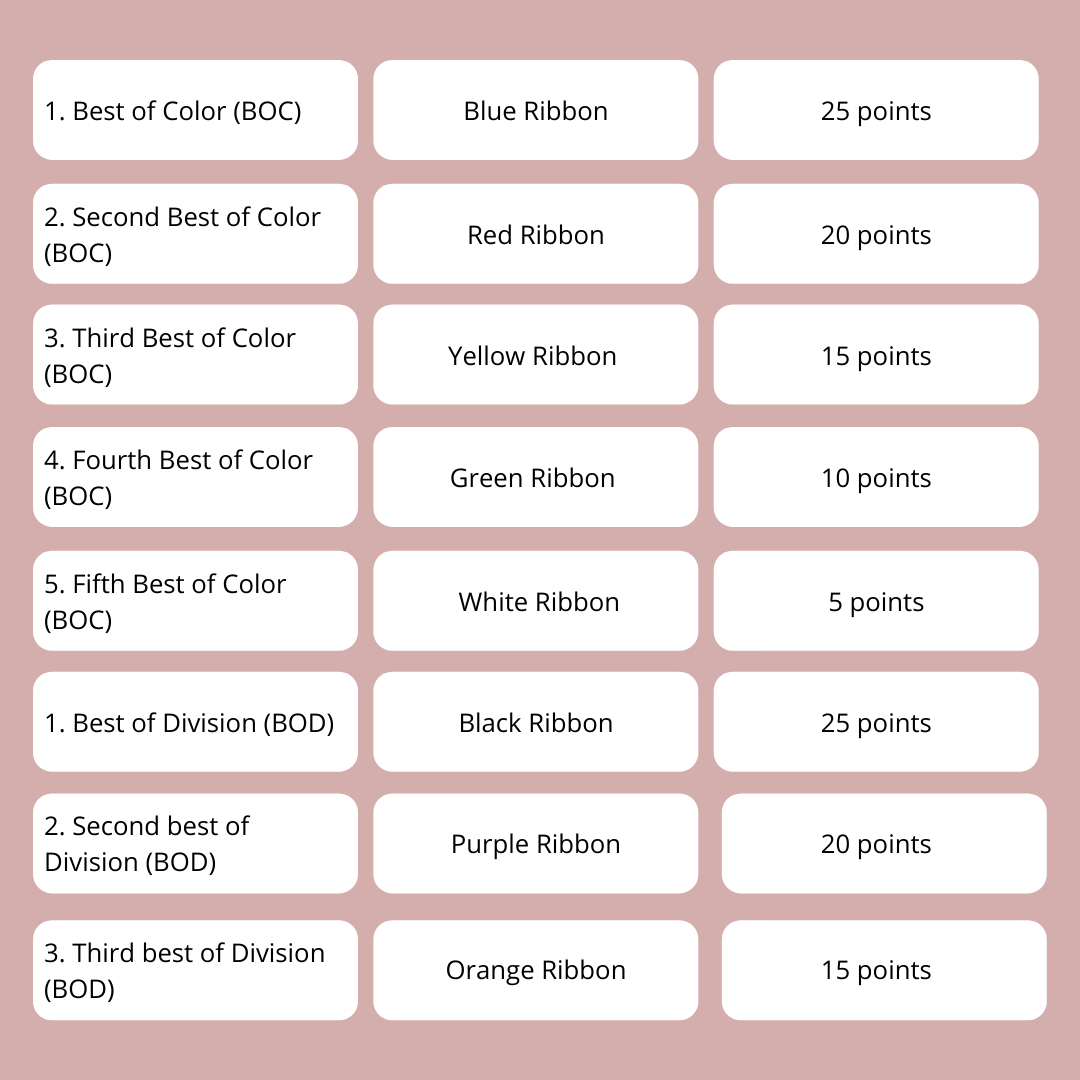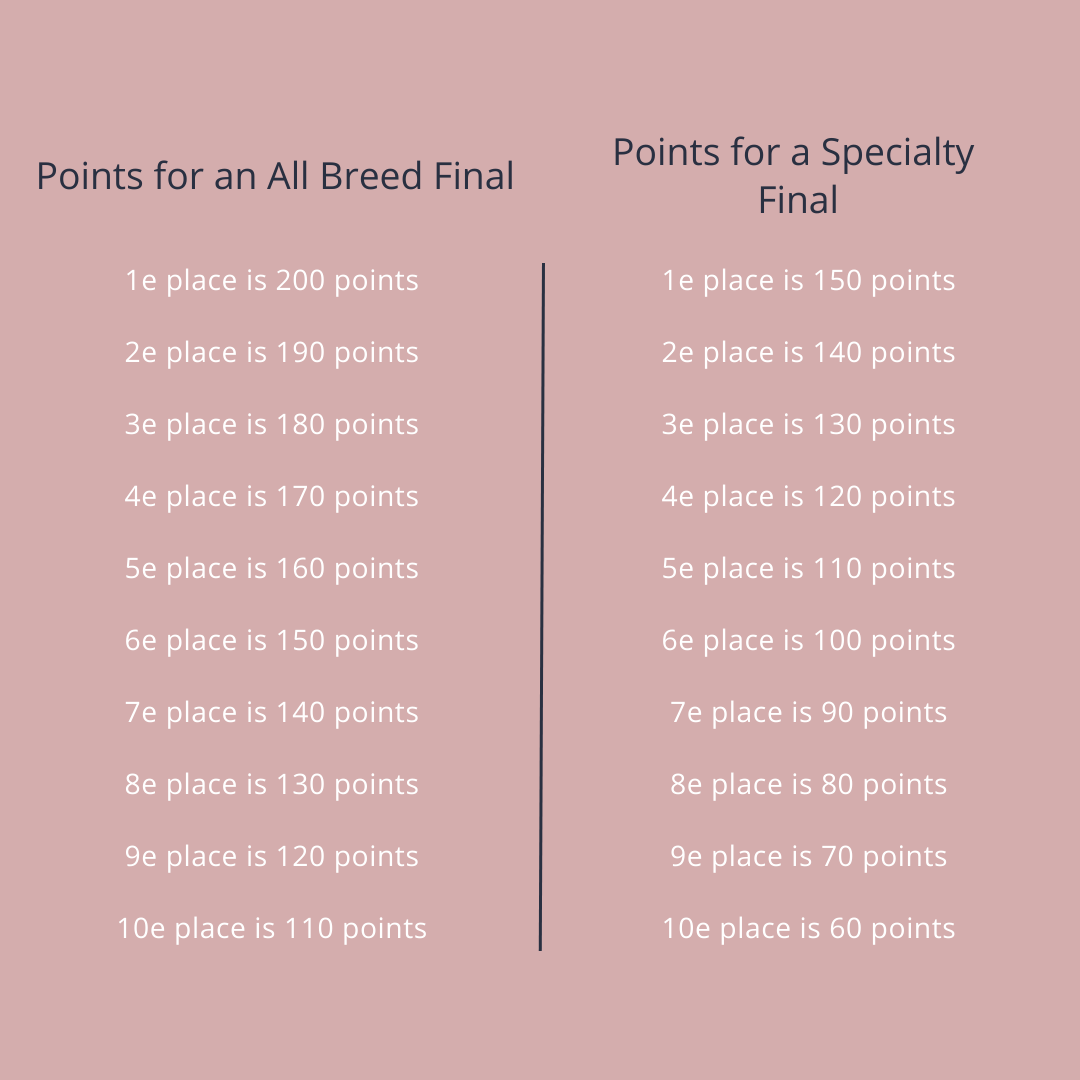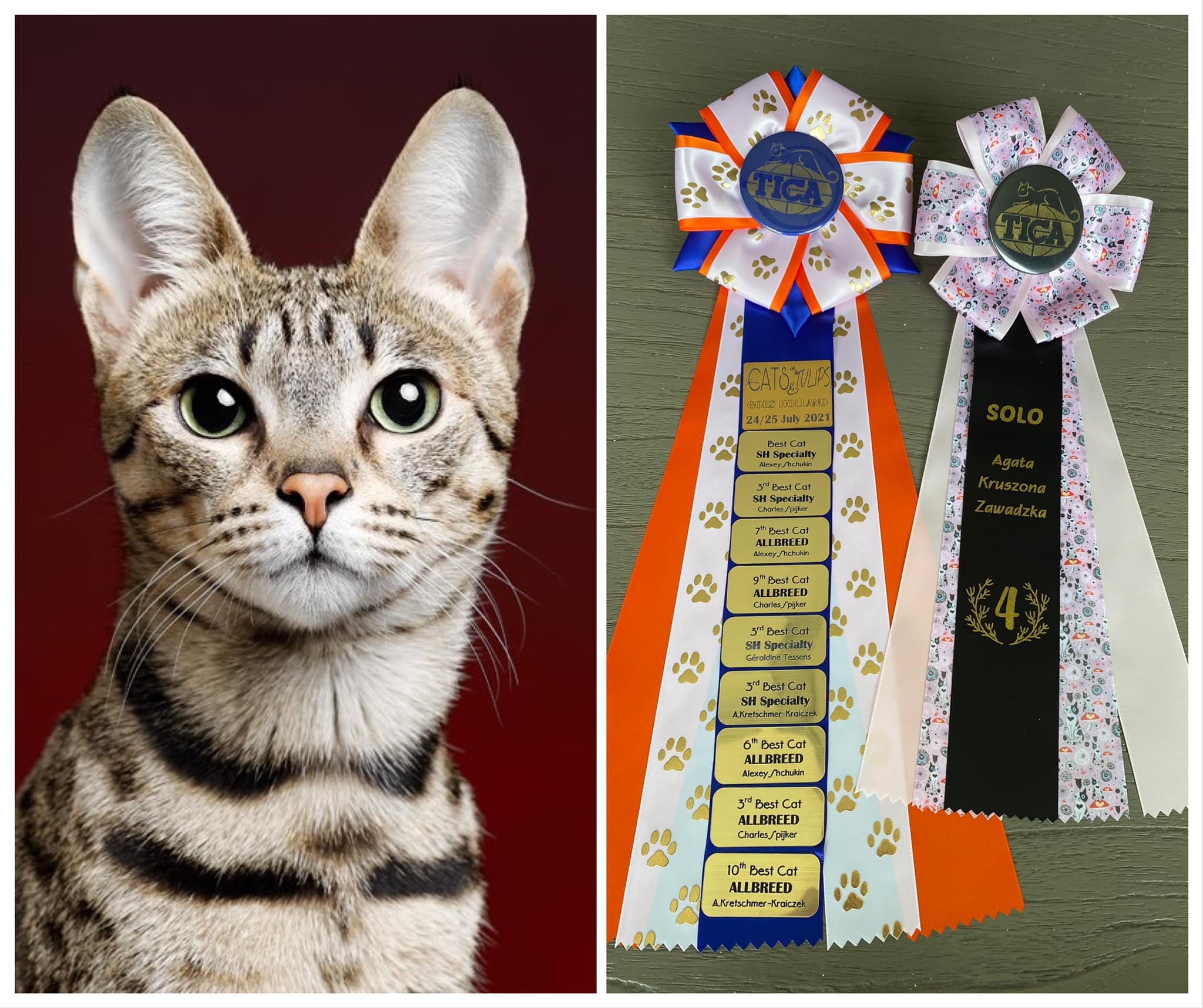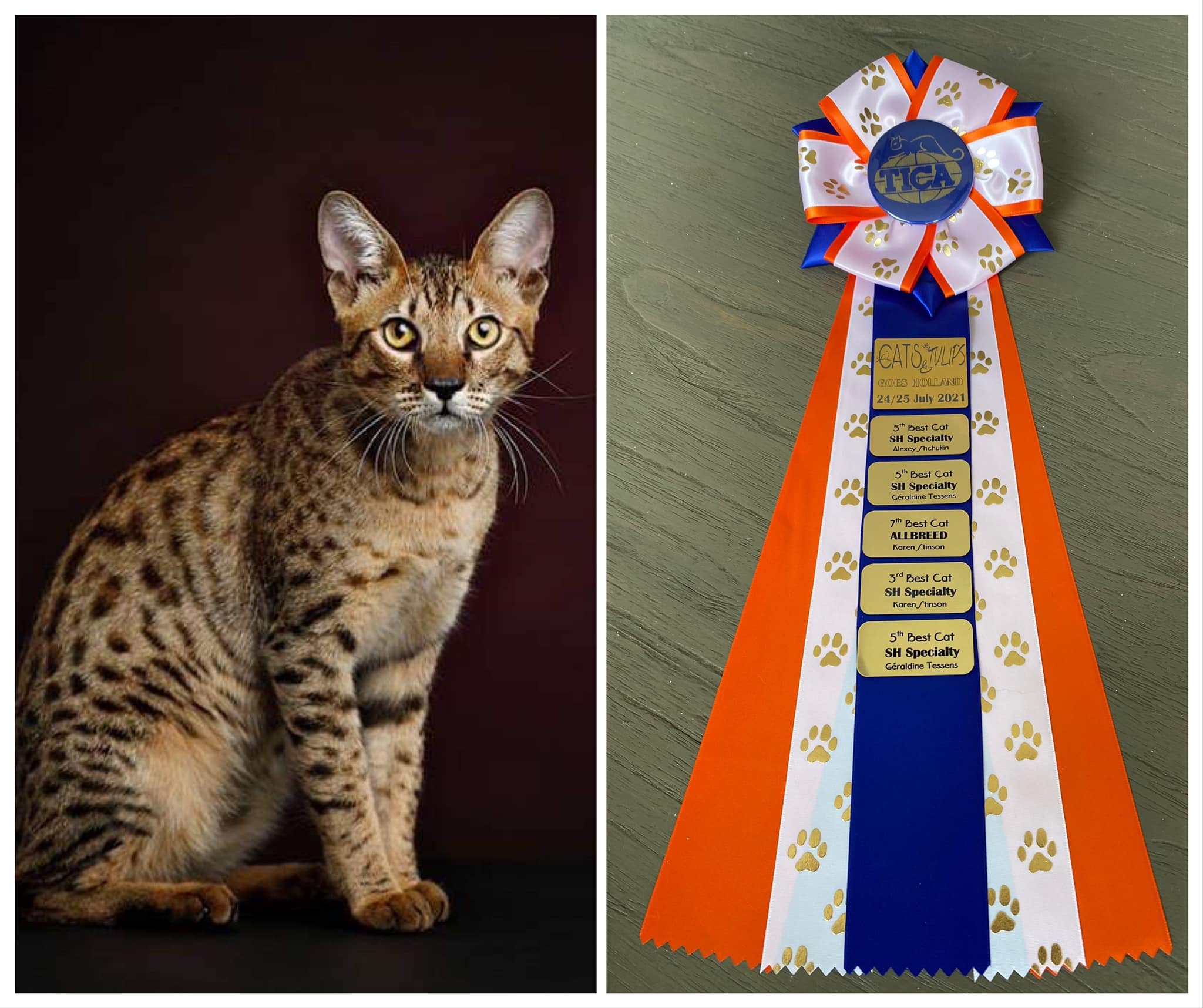Explanation For Showing Your Cat (TICA) by Evelyne Beek of Cattery Cat Vision
Evelyne Beek CatVision
E-mail: info@cat-vision.com
Website: www.cat-vision.com
Facebook: www.facebook.com/catterycatvision
1. Preparing for the Show
1.1. Proper preparation for the show is very important. While cats/kittens find going to shows exciting, without proper preparation the show can be stressful with many other cats and people. We teach our cats from kittenhood, to be picked up frequently, but also to hold certain positions for the judges. It’s very important that the kitten/cat be social and not anxious as this doesn’t work during a show. Some kittens are more temperamental than others, so it may help to take the temperamental kitten to shows as a kitten first, so they learn early that shows needn’t be scary. If you take an adult temperamental cat to a show that hasn’t been there as a kitten, the cat may be frightened and exhibit escape behaviors. Some cats, in consultation with the jury, may be held on your lap so the cat feels more comfortable.
2. What You Need to Show Your Cat
2.1. For showing you’ll need several items, the most important being a large show cage. We recommend the large Sturdi brand pop-up kennel. These kennels are easy to clean and set up. It’s also nice to dress up your Sturdi with advertisements of your cattery.
✤ A show cage (Sturdi)
✤ A litterbox and litter
✤ Your cat must be TICA-registered
✤ Several toys
✤ A basket
✤ Dry and canned foods
✤ Cat treats
✤ Two blankets
✤ Bags to change the litter box
✤ Combs and grooming products
✤ Flyers, business cards, or photo books of your cattery
✤ The show catalog
✤ Food and drink for yourself
✤ Pen, paper, and your show number
✤ Nail scissors to trim the nails before the show
3. Cat Show Classes
3.1. TICA has several classes:
✤ Kittens (4 to 8 months)
✤ Adult cats (from 8 months)
✤ Castrates (alters)
✤ Domestic cats (HHP)
✤ Domestic cat/kitten (HHP Kittens 4 to 8 months)
✤ New breeds (PNB and ANP) and new colors (NEW trait)
✤ Each class is divided by breed, color, and division (=color group). No distinction is made between females and males. They must compete against each other during judging.
There are two different types of show rings:
✤ AB - ring (= All breeds)
✤ SP - ring (= Longhair or Shorthair breed)
Always make sure that your cat is TICA-registered, otherwise, you’ll lose any points and titles
4. What Does the Jury Look At?
4.1. The jury looks at the cat’s body, legs, spots, ears, tail, and head. With Savannahs, it’s important they be slim, but also muscular and long-legged. There should be no vertical stripes and also NO lockets. The judges look for nice dark spots with a clear undercoat. The jury also looks at how the ears are placed, which should be close together and large. The tail shouldn’t be too long, not touch the ground, and be low-set with a round tip. The head must be longer than it is wide and the face forms. It should form an equilateral triangle with a horizontal line above the eyes, two lines along the jawline, with the muzzle above this triangle. The forehead and ears should form a rectangle from the brow line to the top of the ears. The head is small in proportion to the body.
4.2. There are also faults in the Savannah, the jury does judge you on this and they don’t like cats with:
✤ Rosettes
✤Spots in another color like brown or black
✤ White spots on the body (lockets or bikini)
✤ Small ears
✤ Vertical stripes on the body
✤ Cobby body (wide-body)
5. Judging Your Cat and How It Works
5.1. At TICA shows, there are different rings where the judges judge your cat, how we experienced there are at least 4 rings per day but at most shows, there are multiple rings. You also have the all-breed rings and the specialty rings. The all-breed rings are more difficult because here you are competing against all breeds long and short-haired. The specialty rings are easier because the cat count is lower and here you compete with your Savannah only against all breeds of shorthair.
5.2. How does judging begin? The clerk of the jury places numbers above the cages each number is linked to a cat. If you see that your number is on the cage, you place your cat in it and wait until the jury judges your cat. There are always seats for the jury here you can take place. The judge takes the cat out of the cage and starts judging the cat.
5.3. When the judge is done judging he puts the cat back in the cage and proceeds to judge other Savannahs if they are on show. When all Savannahs are judged from the same division you get a card “1, 2, 3, 4, 5, Best of Color or Best of Division. If there is, for example, one silver Savannah, this cat will always be “Best of Color” and “Best of Division”. When all Savannahs are judged, the jury decides who’ll become “Best of Breed” (brown and silver Savannahs). The first two spots of “Best of Breed” make a change for a final if there are enough Savannahs others make only the first change of final points you need to get titles. Below I’ve shown the points of “Best of Color and Division”:
6. Finals
6.1. Finals are the most important part of the shows. This is where you can get titles. You can always become the “best of the breed” but without finals, you can’t get a title. I’m now going to explain how finals work. After the judges have judged all the cats in the class, they‘ll check which cats are eligible for a final. The number of places in a final depends on the number of cats present in a class (cat count). With more than 25 cats, they are 10 places. With 24 cats, there are 9 final places. With 23 cats, 8 final places. With 22 cats there are 7. With 21, there are 6. When there are 20 or fewer cats in a class, there are 5 final places.
6.2. When the jury has chosen which cats have a final, the jury places the number on top of the cages. It’s called by the clerk final “please check your numbers”. You then walk to the ring to see if your number is there. If your number is on one of the cages, it means you have a final. You pick up your cat (provided it’s not in a judging ring because judging comes before finals) and place your cat in the cage with your number. The jury always starts at the last place, and also always tells the good points of the cat and why she/he has a final place. With finals, you get points for the official standings and the estimated standings on the TICA website (these final points are important). I will show you the points.
6.3. Besides the points obtained for the final places, points are also awarded for the number of cats in a certain ring. For example, 40 cats are judged by the judge and your cat gets second place in an AB final. In this case, your cat will receive 190 + 38 points.
7. Titles
7.1. You can get several titles at TICA below all the titles with the necessary finals and points. But, the shows are now different because of Covid-19 so they are now in isolated areas.
Normal Show Points:
✤Champion 300 points from 4 different judges and 1 final.
✤Grand Champion 1000 points with 6 finals from 4 different judges, at least 3 of which must be in the Top 5 SP or Top 10 AB.
✤Double Grand Champion 2000 points plus 1 final in the Top 5 SP or Top 10 AB as a GRC/GRCA/GRM.
✤Triple Grand Champion 3000 points plus 1 final in the Top 5 SP or Top 10 AB as a DGC/DGCA/DGM
✤Quadruple Grand Champion 4000 points plus 1 final in the Top 5 SP or Top 10 AB if a TGC/TGCA/TGM
✤Supreme Grand Champion 6000 points plus 1 Best Cat as a QGC/QGCA/QGM
Isolated Areas Points:
✤Champion 150 points from 2 different judges and 1 final.
✤Grand Champion 500 points with 3 finals from 2 different judges, at least 3 of which must be in the Top 5 SP or Top 10 AB.
✤Double Grand Champion 1000 points plus 1 final in the Top 5 SP or Top 10 AB as a GRC/GRCA/GRM.
✤Triple Grand Champion 15000 points plus 1 final in the Top 5 SP or Top 10 AB as a DGC/DGCA/DGM
✤Quadruple Grand Champion 2000 points plus 1 final in the Top 5 SP or Top 10 AB if a TGC/TGCA/TGM
✤Supreme Grand Champion 3000 points plus 1 Best Cat as a QGC/QGCA/QGM
Regional Award
Besides the points won and the final places, TICA keeps track of the Best 25 Adult Cats, Kittens, Castrates, and Domestic Cats of a certain region. These winning cats receive a certificate (award) after the season and a nice ribbon which is presented at the festive banquet during the annual Regional Show. In addition, the cat receives the honorary title “RW” (Regional Winner)
8. Evelyne Beek from Cattery CatVision On Shows
8.1. We love to go to shows and always look forward to them. We think it’s important that our cats are judged at shows because it’s not only instructive, but very fun! We also like that at least five different judges evaluate our cats, which is why we prefer to enter TICA cat shows.
We have different show cats within our cattery. CatVision Ramsey A Miti is my favorite and the pride of our cattery. She earned her title SGC (Supreme Grand Champion) and she loves shows. Alberta Ezra of CatVision renjoys all the attention from shows and he earned the title QGC (Quadruple Grand Champion). Their show career is nearing the end after this season. Next year we’ll go to shows with our other Savannahs. We attend shows several times a year at every TICA show in the Netherlands and Belgium. We hope to expand this even more soon. We’re also at TICA shows with SKVN (Savannah Cat Association, The Netherlands) to explain about the Savannah cat with Caroline from Cannelle Savannahs. We always attend shows with our friend Lilianne from Horizoncats and have a ton of fun!



